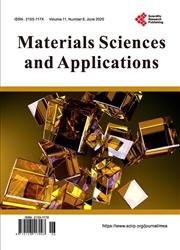Feasibility of 0.02% Nb-Based Microalloyed Steel for the Application of One-Step Quenching and Partitioning Heat Treatment
引用次数: 2
Abstract
To attain an enhanced combination of mechanical properties for low alloyed steel, the current study has been made to fulfill that growing need in the industry. Its results are introduced within this paper. One step Quenching and Partitioning (Q&P) heat treatment has been applied on Niobium-based microalloyed steel alloy with 0.2 %C, in the form of 2 mm thickness sheets. The target of this study is to investigate the viability of applying that significantly recommended, results-wise, heat treatment on the highly well-suited alloy steel samples, to achieve the main target of enhanced properties. A single temperature of 275°C was used as quenching and Partitioning temperature. Four Partitioning periods (30, 200, 500, and 1000 Seconds) were used for soaking at the same temperature. The results were analyzed in the light of microstructural investigation and mechanical testing. All applied cycles did not enhance the strength but moderately improved the ductility and toughness, mainly caused by the slightly high soaking temperature used. Niobium impact of grain refining was apparent through all cycles. The cycle of 500 Seconds Partitioning time obtained optimum values at that particular temperature. The 1000 Seconds Cycle obtained the worst combination of properties. A set of recommendations are set. More research is required at this point, where a lower Partitioning temperature is advised. In the light of the applied combination of parameters, the Partitioning period at such temperature is advised to be between 500 and 1000 Seconds. A high probability that periods closer to 500 than 1000 Seconds will produce better results. More research is needed between those two values of Partitioning time to precisely determine the optimum time at that temperature on that specific alloy.0.02%Nb基微合金钢用于一步淬火和分区热处理的可行性
为了提高低合金钢的机械性能,目前的研究是为了满足行业中日益增长的需求。文中介绍了它的结果。对含0.2%碳的铌基微合金化钢合金进行了一步淬火和分配(Q&P)热处理,其形式为2mm厚的薄板。本研究的目标是研究在非常适合的合金钢样品上应用显著推荐的热处理的可行性,以实现增强性能的主要目标。使用275°C的单一温度作为淬火和分配温度。在相同的温度下,使用四个分区周期(30、200、500和1000秒)进行浸泡。根据微观结构研究和力学测试对结果进行了分析。所有施加的循环都没有提高强度,但适度提高了延展性和韧性,这主要是由于所使用的浸泡温度略高所致。晶粒细化对铌的影响在所有循环中都是明显的。500秒的划分时间周期在该特定温度下获得了最佳值。1000秒循环获得了最差的性能组合。制定了一系列建议。在这一点上需要进行更多的研究,建议降低分区温度。根据所应用的参数组合,建议在这种温度下的分区周期在500到1000秒之间。接近500秒而不是1000秒的周期很可能会产生更好的结果。需要在这两个分配时间值之间进行更多的研究,以精确确定特定合金在该温度下的最佳时间。
本文章由计算机程序翻译,如有差异,请以英文原文为准。
求助全文
约1分钟内获得全文
求助全文

 求助内容:
求助内容: 应助结果提醒方式:
应助结果提醒方式:


